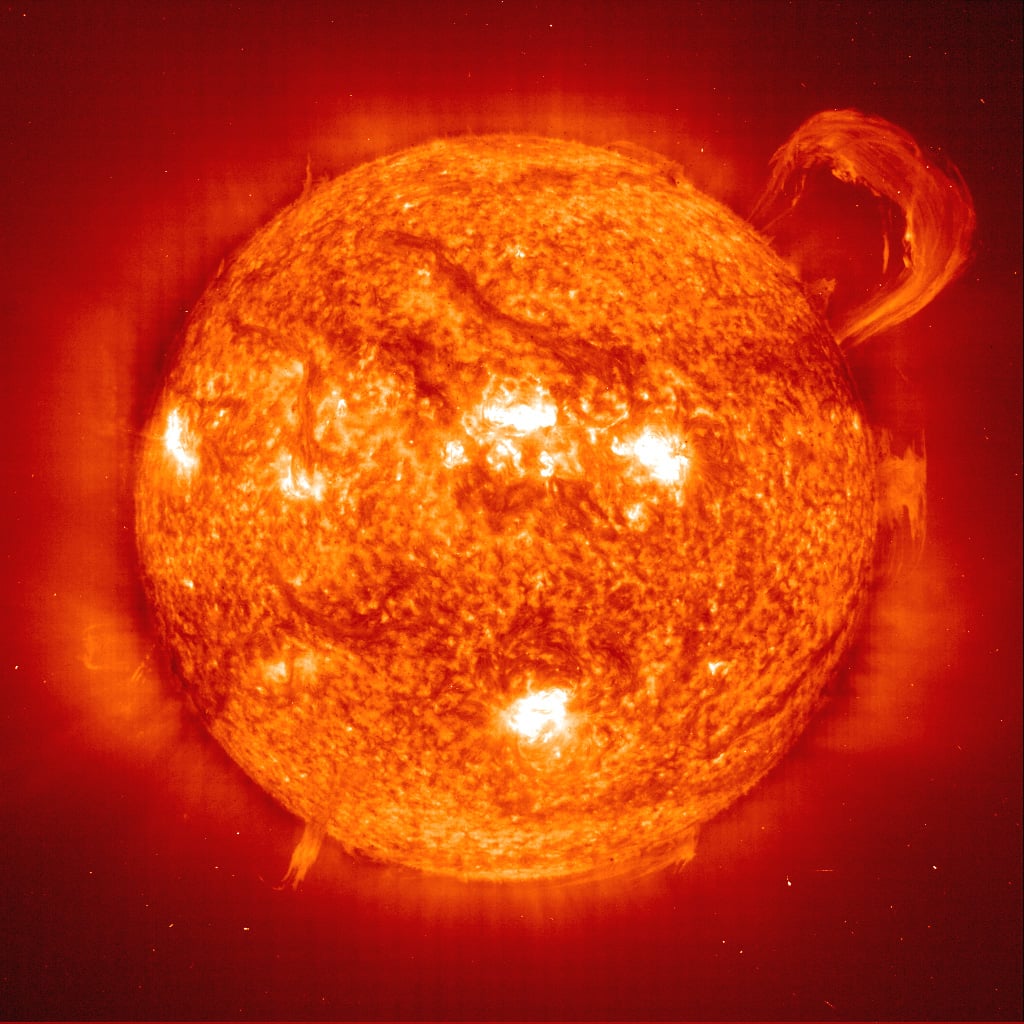There are so many
beautiful pics
of the Sun, it's almost too difficult to know where to start.
[/caption] This is
a picture of the Sun
captured by NASA's SOHO spacecraft. It would be a typical day on the Sun, except for the enormous coronal mass ejection blasting out of the upper right-hand side of the Sun. When the Sun is at its most active state, it can release 5-6 of these a day.
[caption id="attachment_18047" align="alignnone" width="580" caption="STEREO's image of the Sun. Image credit: NASA"]
[/caption] This photograph of the Sun was one of the first captured by NASA's STEREO mission. These twin spacecraft were launched in 2006. One is leading the Earth in orbit, while the other has fallen behind. With both observing the Sun, scientists are given a 3-dimensional view of the Sun.
[caption id="attachment_18048" align="alignnone" width="580" caption="Sun seen from TRACE. Image credit: NASA"]
[/caption] This pic of the Sun shows our star on a calm day, believe it or not. When you look close, this is what the surface of the Sun is doing all the time. The TRACE spacecraft was launched in 1997, and helps scientists study the Sun's magnetic field - and to take beautiful photos like this.
[caption id="attachment_18049" align="alignnone" width="580" caption="Ultraviolet view of the Sun. Image credit: SOHO"]
[/caption] This picture of the Sun was captured by the EIT instrument on board the NASA/ESA SOHO spacecraft. It reveals the normally invisible ultraviolet radiation streaming from the Sun. It's actually a composite of three different Sun photos captured at different parts of the ultraviolet spectrum and then merged together.
[caption id="attachment_18050" align="alignnone" width="580" caption="Picture of the Sun in 3-D. Image credit: NASA"]
[/caption] You're going to need a set of 3-D glasses to get the most out of this Sun photograph. It's an image of Sun captured by NASA's twin STEREO spacecraft. Images like this help scientists understand how the Sun interacts with its local environment, and better predict space weather.
We have recorded an episode of Astronomy Cast just
about the Sun
called
The Sun, Spots and All
.
 Universe Today
Universe Today
